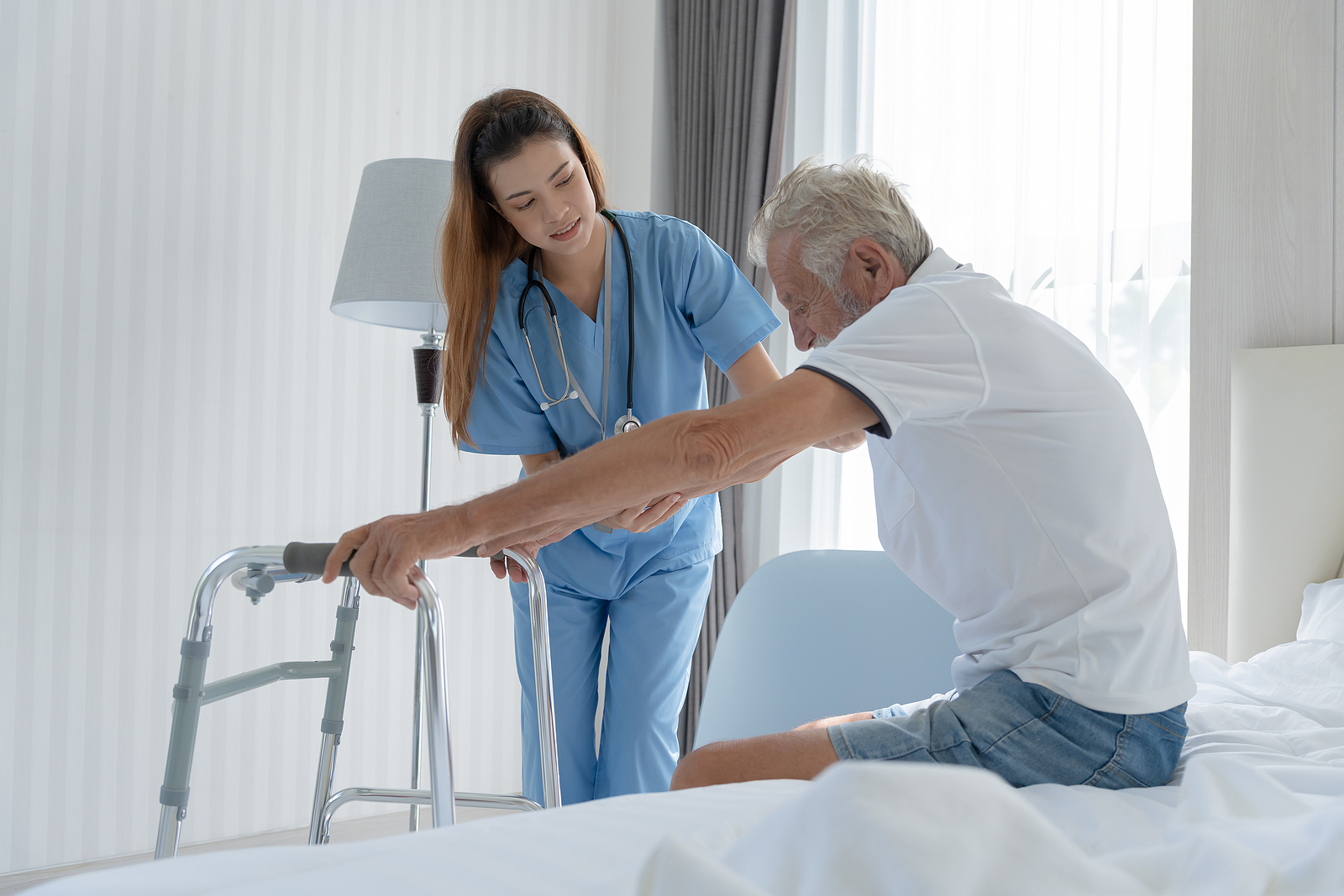In-Home Care Advice to Help Seniors Acclimate to a Walker

Using a Walker: In-Home Care Culpeper County VA
Aging brings about many changes, including a decreased ability to get around easily. For some seniors, it’s necessary to use walkers to help them keep their freedom and stay active. However, this may be frustrating as many see it as a sure sign of their inabilities rather than a chance to stay independent. When seniors struggle after receiving a recommendation to use a walker, it’s vital for their loved ones and in-home care to validate their feelings while also providing tips to acclimate to the walker. With support, seniors can see the value of walkers and gain much-needed stability.
Tips For Walker Success
Ensuring the walker is the right size for their height and body shape is essential. When seniors stand straight up, the handles should align with their arms. Also, their arms should be slightly bent, which makes walking more comfortable. If the fit is correct, there will be less strain and more support.
Seniors should be encouraged to take small, controlled steps when using the walker. Keeping their feet inside the walker’s frame gives them a stable place to stand, while the smaller steps help them remain balanced, making them less likely to lose control. They should also be encouraged to look ahead rather than at their feet, which can be difficult initially. The in-home care team can assist by encouraging the correct form, as well as ensuring the path seniors need to take is clutter-free.
It’s also encouraged to stand up straight and keep the shoulders back when using a walker. Engaging the core muscles increases stability while slouching or leaning too much on the walker can cause seniors to be unbalanced. Seniors should also be monitored the first few times they use their walkers. Many walkers have brakes or locks that can keep them from moving or rolling when they are not used. Understanding how these features work is essential to success.
In-Home Care
If loved ones or the in-home care team notice that seniors are shaky, reaching out for stability, or if seniors have fallen, it’s a good idea to talk with the medical team about adding a walker. They can determine the mobility needs and suggest the best kind of walker. Additionally, when talking with the doctor, learning about care and maintenance for each walker option helps seniors make an informed choice.
At first, using a walker may feel strange or challenging, but seniors can get used to it and feel more confident with practice. They should start with short walks in a safe place and increase the length of their walks over time. Loved ones and the in-home care team can help by encouraging practice and walking with them.
Using the tips above and with the proper support, seniors can get the most out of their walkers, keep their freedom, and lower their risk of falling or getting hurt. When seniors feel supported and able to explore their options, they are more likely to get on board with changes.
If you or an aging loved one are considering hiring In-Home Care in Culpeper County, VA, please contact the caring staff at LivinRite Home Care. Call Us Today at (703) 634-9991. Serving Northern Virginia, The Valley, and Surrounding Communities.
Source 1 / Source 2 / Source 3
- Skilled Nursing: Offering Peace of Mind for Seniors Aging in Place - April 8, 2025
- Can Physical Therapy Help Seniors Learn How to Fall Safely? - March 27, 2025
- Senior Home Care Helps Keep Aging Adults Safe in the Kitchen - March 11, 2025
